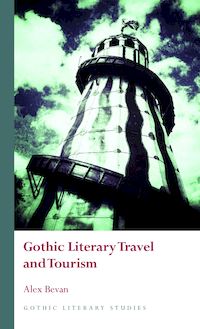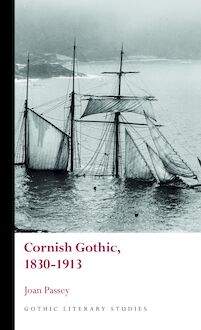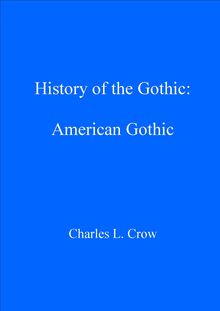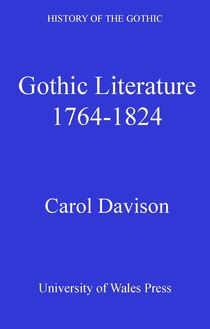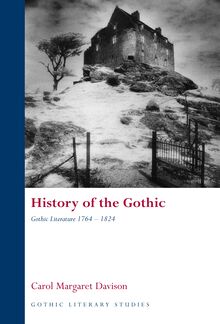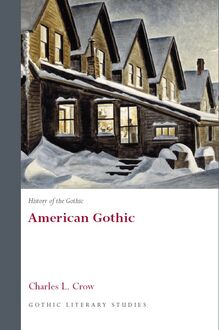-
 Univers
Univers
-
 Ebooks
Ebooks
-
 Livres audio
Livres audio
-
 Presse
Presse
-
 Podcasts
Podcasts
-
 BD
BD
-
 Documents
Documents
-
- Cours
- Révisions
- Ressources pédagogiques
- Sciences de l’éducation
- Manuels scolaires
- Langues
- Travaux de classe
- Annales de BEP
- Etudes supérieures
- Maternelle et primaire
- Fiches de lecture
- Orientation scolaire
- Méthodologie
- Corrigés de devoir
- Annales d’examens et concours
- Annales du bac
- Annales du brevet
- Rapports de stage
La lecture à portée de main
Découvre YouScribe en t'inscrivant gratuitement
Je m'inscrisDécouvre YouScribe en t'inscrivant gratuitement
Je m'inscrisEn savoir plus
En savoir plus

Description
What do tales of stalking vampires, restless Egyptian mummies, foreign master criminals, barbarian Eastern hordes and stomping Prussian soldiers have in common? As Gothic Invasions explains, they may all be seen as instances of invasion fiction, a paranoid fin-de-siècle popular literary phenomenon that responded to prevalent societal fears of the invasion of Britain by an array of hostile foreign forces in the period before the First World War. Gothic Invasions traces the roots of invasion anxiety to concerns about the downside of Britain’s continuing imperial expansion: fears of growing inter-European rivalry and colonial wars and rebellion. It explores how these fears circulated across the British empire and were expressed in fictional narratives drawing strongly upon and reciprocally transforming the conventions and themes of gothic writing. Gothic Invasions enhances our understanding of the interchange between popular culture and politics at this crucial historical juncture, and demonstrates the instrumentality of the ever-versatile and politically-charged gothic mode in this process.
Acknowledgements
List of Illustrations
Introduction: The Call to Arms
Section I: Gothic Fictions of Empire
Chapter 1: Gothic Invasions from the East and West Indies: Vampires, Mesmerists and Other Demons
Chapter 2: Gothic Invasions from Egypt: Mummies and Curses
Section II: Genre and Gothic Invasion
Chapter 3: Crime Fiction: Mephistophelean Master Criminals
Chapter 4: Yellow Peril Fiction: Villainous Celestials
Chapter 5: Military Invasion Tales: Brutish Europeans and Gothic Battlefields
Afterword: ‘To Arms!’ in Earnest
Select Bibliography
Index
Sujets
Informations
| Publié par | University of Wales Press |
| Date de parution | 28 mars 2018 |
| Nombre de lectures | 0 |
| EAN13 | 9781786832108 |
| Langue | English |
| Poids de l'ouvrage | 26 Mo |
Informations légales : prix de location à la page 0,3450€. Cette information est donnée uniquement à titre indicatif conformément à la législation en vigueur.
Extrait
GOTHIC INVASIONS
00 Prelims Gothic Invasion 2018_3_13.indd 1 13-Mar-18 12:18:37 PMSERIES PREFACE
Gothic Literary Studies is dedicated to publishing groundbreaking
scholarship on Gothic in literature and flm. The Gothic, which has
been subjected to a variety of critical and theoretical approaches,
is a form which plays an important role in our understanding of
literary, intellectual and cultural histories. The series seeks to promote
challenging and innovative approaches to Gothic which question
any aspect of the Gothic tradition or perceived critical orthodoxy.
Volumes in the series explore how issues such as gender, religion,
nation and sexuality have shaped our view of the Gothic tradition.
Both academically rigorous and informed by the latest developments
in critical theory, the series provides an important focus for scholarly
developments in Gothic studies, literary studies, cultural studies and
critical theory. The series will be of interest to students of all levels
and to scholars and teachers of the Gothic and literary and cultural
histories.
SERIES EDITORS
Andrew Smith, University of Sheffeld
Benjamin F. Fisher, University of Mississippi
EDITORIAL BOARD
Kent Ljungquist, Worcester Polytechnic Institute Massachusetts
Richard Fusco, St Joseph’s University, Philadelphia
David Punter, University of Bristol
Chris Baldick, University of London
Angela Wright, University of Sheffeld
Jerrold E. Hogle, University of Arizona
For all titles in the Gothic Literary Studies series
please visit www.uwp.co.uk
00 Prelims Gothic Invasion 2018_3_13.indd 2 13-Mar-18 12:18:37 PMGothic Invasions: Imperialism, War
and Fin-de-Siècle Popular Fiction
by
Ailise Bulfn
UNIVERSITY OF WALES PRESS
2018
00 Prelims Gothic Invasion 2018_3_13.indd 3 13-Mar-18 12:18:38 PM© Ailise Bulfn, 2018
All rights reserved. No part of this book may be reproduced in any material
form (including photocopying or storing it in any medium by electronic
means and whether or not transiently or incidentally to some other use of
this publication) without the written permission of the copyright owner.
Applications for the copyright owner’s written permission to reproduce
any part of this publication should be addressed to the University of Wales
Press, 10 Columbus Walk, Brigantine Place, Cardiff CF10 4UP.
www.uwp.co.uk
British Library Cataloguing-in-Publication Data
A catalogue record for this book is available from the British Library.
ISBN 978-1-78683-209-2
e-ISBN 978-1-78683-210-8
The right of Ailise Bulfn to be identifed as author of this work has been
asserted in accordance with sections 77 and 79 of the Copyright, Designs
and Patents Act 1988.
Typeset in Wales by Eira Fenn Gaunt, Pentyrch, Cardiff
Printed by CPI Antony Rowe, Melksham
00 Prelims Gothic Invasion 2018_3_13.indd 4 13-Mar-18 12:18:38 PMContents
Acknowledgements vii
List of Illustrationsix
Introduction: The Call to Arms 1
Part I: Gothic Fictions of Empire
1 Gothic Invasions from the East and West Indies:
Vampires, Mesmerists and Demons 27
2 Gothic Invasions from Egypt: Mummies and Curses 61
Part II: Genre and Gothic Invasion
3 Crime Fiction: Mephistophelean Master Criminals 99
4 Yellow-Peril Fiction: Villainous Celestials 131
5 Military Invasion Tales: Brutish Europeans and
Gothic Battlefelds 171
Afterword: ‘To Arms!’ in Earnest 205
Notes 213
Select Bibliography 267
Index285
00 Prelims Gothic Invasion 2018_3_13.indd 5 13-Mar-18 12:18:38 PMACknowledgements
Writing a book is by no means an individual effort, and for me has
been enabled by the considerable and generous support of a number
of people whom I would very much like to thank here. Darryl
Jones’s expertise in the dark side of the literary imagination has been
inspirational on the project from the start and his support and advice
have been invaluable throughout. I would also like to thank all the
following people for productive conversations, insightful feedback
and opportunities to present the work: Dara Downey, Douglas
Kerr, Julia Kuehn, Roger Luckhurst, Victoria Margree, Bernice
Murphy, Meg Tasker, Kim Wagner and Minna Vuohelainen. I
must also thank the members of the Invasion Network research
group (as we decided to call ourselves without realising the possible
irony of the title) for sharing their wealth of historical knowledge
and providing a tremendous forum for sounding out new
invasionrelated ideas – especially Brett Holman, Michael Hughes, Michael
Matin, Richard Scully, Antony Taylor and Harry Wood. I am
indebted to the Shielians for their generosity in sharing their
knowledge, most particularly John D. Squires, whose passing has
left the group sadly depleted. Many thanks also are due to my editors
at University of Wales Press – to Andrew Smith for encouraging
me to submit and to Sarah Lewis for guiding me through the process.
Most of the work was carried out at the Trinity Long Room Hub,
Arts and Humanities Research Institute of Trinity College Dublin,
and I would like to thank the staff and my fellow residents for their
support and for providing such a stimulating environment throughout.
I would also like to thank the Department of English at the National
University of Ireland Maynooth for providing a very supportive
environment in which to complete the book.
00 Prelims Gothic Invasion 2018_3_13.indd 7 13-Mar-18 12:18:38 PMAcknowledgements
Many thanks are also due to the staff in various libraries, particularly
Simon Lang and all the staff in the Early Printed Books room of
Trinity College Library; also the British Library, the British National
Army Museum, the Richmond Local Studies Library and the
State Library of Victoria, Melbourne. I am grateful to all the individuals
and organisations who provided me with copies of the images
used and granted me permission to reproduce them. They are
acknowledged individually beneath the images in each chapter.
I would also like to acknowledge that this project was largely
funded by a Government of Ireland Postdoctoral Fellowship from
the Irish Research Council, without which it would not have been
possible. It also benefted from a Royal Irish Academy Charlemont
Scholarship and Popular Culture Association award which facilitated
travel to archives and conferences.
My deepest gratitude is due to the family and friends who have
kept me going throughout, most especially my husband Liam, my
parents Antoinette and Mike, and my three children Siofra, Morgan
and Emmett. This would not have been possible without you all
– and it is dedicated to you.
Some of the material here has been previously published in partial
form: chapter 2 is an expanded version of an article frst published
in English Literature in Transition, 54/4 (2011); parts of chapter 3
derive from a chapter in Mandy Treagus et al. (eds), Changing the
Victorian Subject (Adelaide: University of Adelaide Press, 2014); and
parts of chapter 4 derive from an article in Julia Kuehn (ed.),
Australasian Journal of Victorian Studies, The Victorians and China,
20/1 (2015).
viii
00 Prelims Gothic Invasion 2018_3_13.indd 8 13-Mar-18 12:18:38 PMlist of illustrAtions
Colour plates between 148–9
I. ‘The Battle of Isandlwana, 22 January 1879.’ Oil on canvas
by Charles Edwin Fripp, 1885.
II. Front cover detail of Doctor Nikola (London: Ward, Lock
& Co., 1896).
III. Cover of the second edition of The Yellow Danger (London:
Grant Richards, 1900).
IV. Hodder & Stoughton 1944 ‘yellow jacket’ edition of John
Buchan, The Thirty-Nine Steps (1915).
Figures
Introduction
Figure 1. ‘History Repeats Itself. (Scene in a London Restaurant.)
“Nero fddled while Rome was burning.”’ The Windsor
Magazine, 1 (May 1895), 480.
Chapter 1
Figure 1. ‘The Fighting on the Indian Frontier: With the Tirah
Field Force’, Supplement to The Graphic, 18 December
1897, 1.
Figure 2. Cover illustration, The Mystery of Cloomber (London:
Ward & Downey, 1888).
Figure 3. ‘As silently and rapidly as one of his native snakes.’
‘Uncle Jeremy’s Household’, The Boy’s Own Paper, 9
(February 1887), 329.
00 Prelims Gothic Invasion 2018_3_13.indd 9 13-Mar-18 12:18:38 PMIllustrations
Chapter 2
Figure 1. ‘“Hold on!”: “An allegory on the banks of the Nile”
– Mrs. Malaprop’. Punch, 82 (10 June 1882), 271.
Figure 2. ‘So distorted was his countenance that I instinctively
recoiled from him in horror.’ Pharos the Egyptian (London:
Ward, Lock & Co., 1899), p. 56.
Figure 3. ‘Government Hospitality.’ Punch, 53 (13 July 1867),
15.
Figure 4. ‘A “Capital” Sentence!’ Punch, 83 (16 December 1882),
282.
Figure 5. ‘“Drink”, he said.’ Pharos the Egyptian (London: Ward,
Lock & Co., 1899), p. 180.
Figure 6. ‘The Egyptian Question.’ Punch, 110 (28 March 1896),
161.
Chapter 3
Figure 1. Dr Nikola in his laboratory in Port Said. Frontispiece
to A Bid for Fortune (London: Ward, Lock and Bowden,
1895).
Figure 2. ‘He turned his rounded back upon me.’ ‘The Final
Problem’, Strand Magazine, 6 (December 1893), 563.
Figure 3. ‘I walked right into six of them’, ‘The Crooked Man’,
Strand Magazine, 6 (July 1893), 31.
Figure 4. ‘As It May Be: A Forecast’, The Bulletin, 12 October
1901, 22.
Figure 5. ‘After the frst cut the wretched culprit no longer
attempted to comport himself like a man.’ The Beautiful
White Devil, The African Review, 6 (9 November 1895),
810.
Chapter 4
Figure 1. ‘Enraged Coolie.’ ‘A Chapter on the Coolie Trade’,
Harper’s New Monthly Magazine, 29 (June 1864), 2.
Figure 2. ‘The Work of Civilisation.’ Punch, 107 (11 August
1894), 62.
Figure 3. ‘The Assassin.’ Doctor Nikola (London: Ward, Lock &
Co., 1896), 97.
x
00 Prelims Gothic Invasion 2018_3_13.indd 10 13-Mar-18 12:18:38 PMIllustrations
Figure 4. ‘To my amazement he was a Chinaman.’ Dr Nikola’s
Experiment (London: Hodder & Stoughton, 1899),
p. 144.
Figure 5. ‘The scream of the victim and the scream of his slayer.’
The Empress of
-
 Univers
Univers
-
 Ebooks
Ebooks
-
 Livres audio
Livres audio
-
 Presse
Presse
-
 Podcasts
Podcasts
-
 BD
BD
-
 Documents
Documents
-
Jeunesse
-
Littérature
-
Ressources professionnelles
-
Santé et bien-être
-
Savoirs
-
Education
-
Loisirs et hobbies
-
Art, musique et cinéma
-
Actualité et débat de société
-
Jeunesse
-
Littérature
-
Ressources professionnelles
-
Santé et bien-être
-
Savoirs
-
Education
-
Loisirs et hobbies
-
Art, musique et cinéma
-
Actualité et débat de société
-
Actualités
-
Lifestyle
-
Presse jeunesse
-
Presse professionnelle
-
Pratique
-
Presse sportive
-
Presse internationale
-
Culture & Médias
-
Action et Aventures
-
Science-fiction et Fantasy
-
Société
-
Jeunesse
-
Littérature
-
Ressources professionnelles
-
Santé et bien-être
-
Savoirs
-
Education
-
Loisirs et hobbies
-
Art, musique et cinéma
-
Actualité et débat de société
- Cours
- Révisions
- Ressources pédagogiques
- Sciences de l’éducation
- Manuels scolaires
- Langues
- Travaux de classe
- Annales de BEP
- Etudes supérieures
- Maternelle et primaire
- Fiches de lecture
- Orientation scolaire
- Méthodologie
- Corrigés de devoir
- Annales d’examens et concours
- Annales du bac
- Annales du brevet
- Rapports de stage

